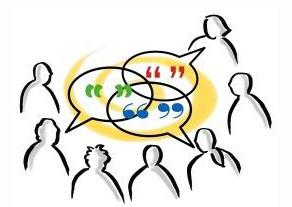Board chairs
Great ones. Mediocre ones. Or just plain bad ones!
- Written by
- Simone Joyaux
- Added
- October 29, 2014

The chair of your board might be so great that you want to clone her for the future.
Wouldn’t that be wonderful?
Maybe your chair is okay. You know – not bad but not exactly good, more like mediocre.
Or – oh gosh – maybe your chair is just plain bad.
In my experience, most board chairs are neither great nor bad. They are just okay and certainly someone okay, or mediocre, is better than bad. But how about raising your sights? How about aiming for a darn good board chair, even a really great one?
The goal is to pick the right chair for your board in the first place because firing a chair is even harder than firing a lousy board member. (But sometimes it’s necessary so do it. Launch the process, see Firing Lousy Board Members – and Helping the Others Succeed, Charity Channel Press, USA, 2014.)
Of course, to pick the right chair you have to have a good job description and a clear understanding of the skills and behaviours needed.
Your organisation – the CEO, board members and the board’s governance committee – have to commit to the hard work of getting a good chair.
The CEO has to be an effective leader and enabler – of both the board and its committees. In this case, the CEO has to be very effective in partnering with and enabling the governance committee to do the tough work to recruit a good board chair.
(See, Strategic Fund Development, 3rd edition, Wileys, USA, 2011.)
So what's the job of the chair of the board?

- First, the chair serves as a facilitator. She chairs board meetings and manages the conversations. She summarises what is being said in order to help the conversation go forward. She ensures equal voice and facilitates the decision-making process through motions and voting.
- The chair distinguishes between personal opinion (which is often irrelevant) and professional expertise. She helps board members – and the board as a group – to understand and perform accordingly.
- The chair partners with the CEO to ensure that the board and its committees do not venture into management.
- Together, the chair and CEO facilitate the proper relationship between the board and its committees. The CEO makes sure that staff who work with the board’s committees understand the distinctions between governance and management – and enable board members and committees effectively.
- Together, the chair and CEO develop the agendas for board meetings. They also identify chairs for the different committees and assign each board member to the appropriate committee.
How is the chair of the board different than any other board member?

Mostly there is no difference. The chair has no more authority than any other board member. She subscribes to the same limitations as any other board member. (Check out John Carver’s work).
The board chair does not recruit or fire board members. As a member of the board, she helps identify candidates and the governance committee does the rest of the work.
When it comes to poor performance by board members, the chair often participates in conversations with the governance committee. The governance committee proceeds through all the various steps of performance feedback, enhancing attrition, or firing.
Who has the power?
The board does, not the chair, not the CEO, not any other individual. Governance is a group process. The group decides. If your board members are so weak and ineffectual that they can’t pick the right chair or demand appropriate behaviour from her... then your board deserves what it gets.
Remember
Your organisation deserves a great board chair. Create a shared understanding of great, mediocre and just plain bad. Then work together to get the best.


















